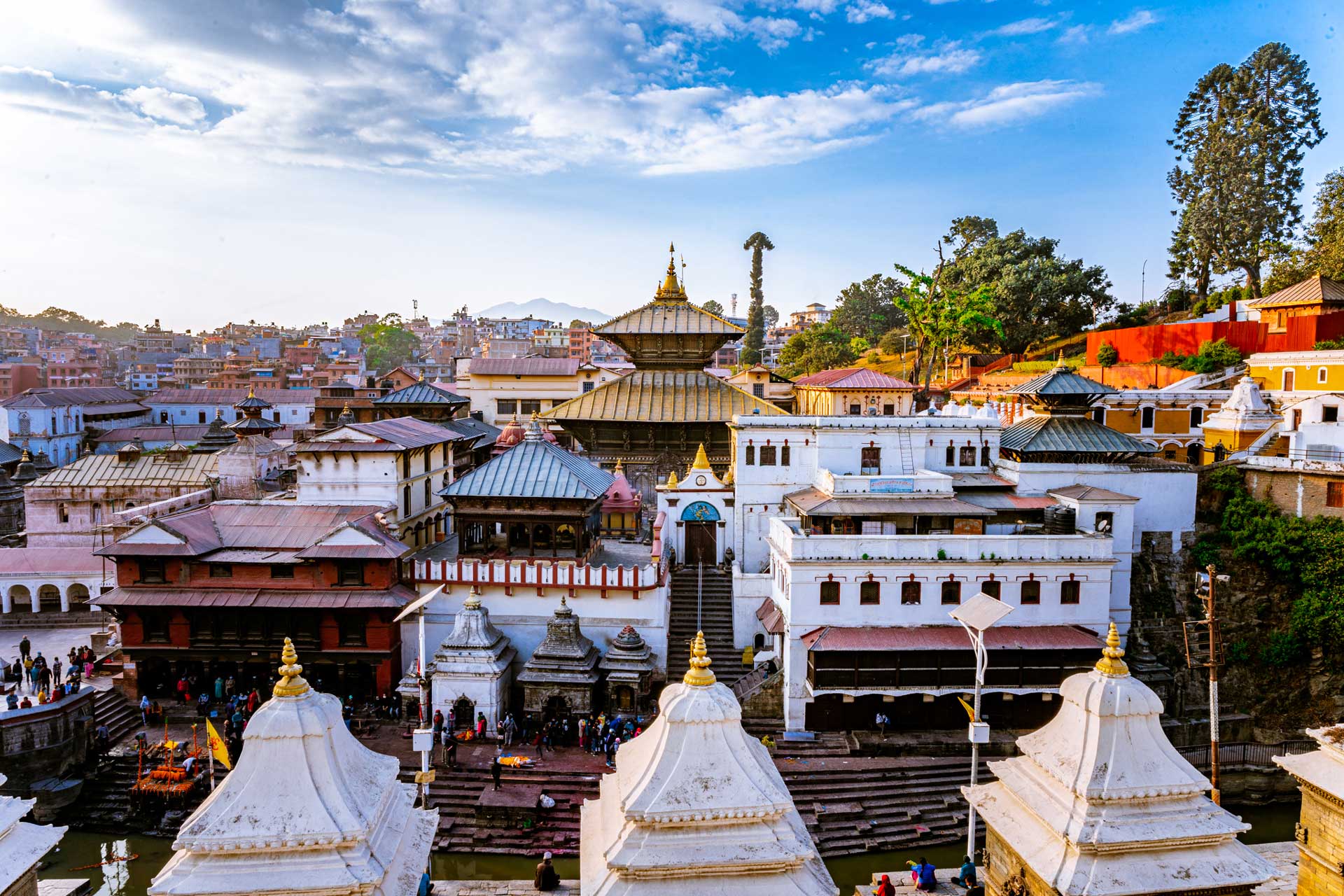Nestled on the banks of the Bagmati River, the Pashupatinath Temple stands as one of the most sacred Hindu shrines in the world, drawing millions of visitors annually. Its profound religious significance, rich history, and architectural grandeur make it a cornerstone of Nepal’s tourism sector.
Pashupatinath, believed to be over 400 years old, is a UNESCO World Heritage Site that holds immense spiritual value for Hindus. The temple is dedicated to Lord Shiva, known as the ‘Lord of Animals’ or ‘Pashupati’. It is not just a place of worship but a historical monument that reflects the rich cultural heritage of Nepal.
The temple’s exquisite pagoda-style architecture is a marvel, featuring intricately carved wooden rafters, stunning sculptures, and a gilded roof. The main sanctum houses a sacred Shiva Lingam, attracting devotees from around the globe. The extensive temple complex includes numerous smaller temples, ashrams, and shrines, each contributing to its spiritual and aesthetic appeal.
The temple comes alive during the Maha Shivaratri festival when thousands of pilgrims and sadhus (holy men) from Nepal and India congregate to pay homage to Lord Shiva. The vibrant celebrations, characterized by devotional songs, dances, and rituals, offer a unique cultural spectacle that attracts both devotees and tourists alike.
Pashupatinath is a key pillar in Nepal’s tourism industry, contributing significantly to the local economy. The temple’s magnetism draws spiritual tourists, history enthusiasts, and cultural aficionados, fostering a diverse influx of visitors. Local businesses, including hotels, restaurants, and shops, thrive due to the constant flow of pilgrims and tourists.
For many, a visit to Pashupatinath is a pilgrimage. The temple’s spiritual ambiance offers solace and peace, making it a preferred destination for those seeking spiritual rejuvenation. The rich traditions and rituals performed at Pashupatinath provide a deep insight into Nepalese culture and religious practices. Tourists get a firsthand experience of Nepal’s intangible cultural heritage. The influx of tourists generates revenue for the local community and the government. The temple complex and surrounding areas see significant economic activity, creating jobs and supporting local artisans and vendors.
To maintain the temple’s sanctity and architectural integrity, various conservation projects are underway. The Pashupati Area Development Trust (PADT) is actively involved in preserving the temple’s heritage, ensuring it remains a sustainable tourist attraction for future generations.
Pashupatinath Temple is easily accessible from Kathmandu city, located about 5 kilometers from the city center. The temple is open to visitors throughout the year, but non-Hindus are only allowed to view the temple from the outside. However, the surrounding ghats, where cremation ceremonies are conducted, can be freely explored, providing a poignant glimpse into Hindu traditions and customs.
Pashupatinath Temple is not just a religious site; it is a symbol of Nepal’s rich cultural tapestry and a vital component of its tourism industry. Its spiritual significance, combined with its historical and cultural value, continues to draw visitors from all corners of the world, enhancing Nepal’s reputation as a premier tourist destination.






